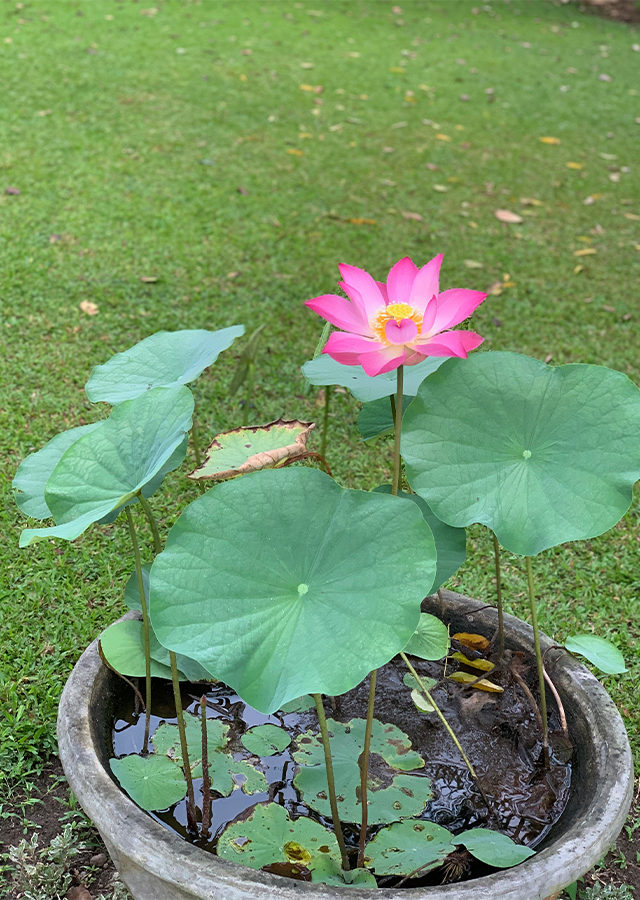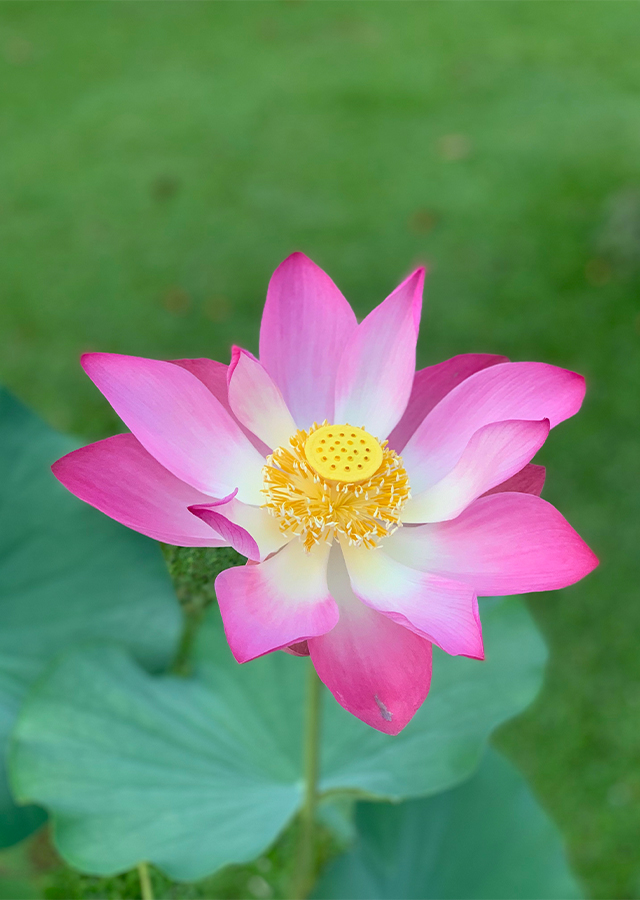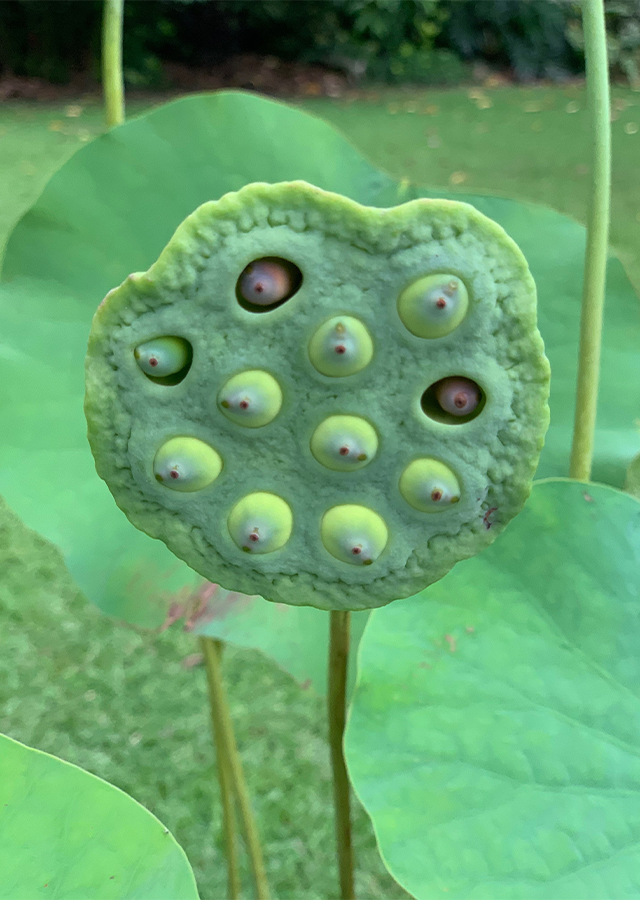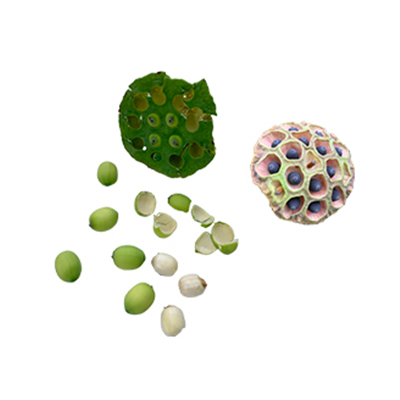Secred Lotus
Nelumbo nucifera Gaertn.
Nelumbonaceae
Location in our garden
Aquatic



Synonym
Nelumbium album Bercht. & J.Presl.
Nelumbium asiaticum Rich.
Nelumbium caspicum Fisch. ex DC.
Habitus
Aquatic. A large, perennial, glaucous, glabrous, aquatic herb, 1.2-2.5 m tall
Part Used
Seeds
Flowers
Fruit
Roots
Growing Requirements
Need Shade
Habitat
Aquatic
Overview
Indian lotus originates from continental Asia (possibly India), but is now widely distributed from North-Eastern Africa to North-Eastern Australia, including China, South-East Asia, and Japan (as wild or cultivated plants). For at least 6,000 years it has been associated with Indian culture and religion as a sacred flower. It is also occasionally cultivated as an ornamental in Europe, Africa and America.
Vernacular Names
Bua-luang (Thailand), Baino (Tagalog-Philippines), Sen (Vietnamese), Lian hua (Chinese), Hasu (Japanese), Indischer Lotus (German), Seroja (Indonesia), Padema (Malaysia), Chhu:k (Cambodia), Bwa (Laos).
Agroecology
Lotus plants are adapted to grow in the flood plains of slow-moving rivers and delta areas. Requires a rich loam. Succeeds in water up to 2.5 m deep, with water temperatures of 23-27 °C in the growing season. The natural habitat of Lotus plants in freshwater bodies.
Morphology
- Rhizomes - creeping, jointed, up to 10 m long, 6-9 cm in diameter, interjoints ellipsoidal, 10-30 cm long, white to light brown, fleshy, mucilaginous and slightly fibrous.
- Leaves - peltate, arising from the joints, one per joint, petiole terete, up to 2.5 m long, covered with short fleshy prickles, inside with numerous air canals, blade depressed orbicular or shallowly cup-shaped.
- Flowers - solitary, axillary, projecting above the water higher or as high as the leaves, erect or nodding, 15-25 cm in diameter, fragrant, pink with a white base.
- Fruits - an aggregate of indehiscent nutlets; nutlets 10-30 per aggregate fruit, ovoid-oblongoid, 1-2.5 cm × 1-1.5 cm, black-brown.
- Seeds - with one bifid cotyledon and endosperm enveloping the embryo as a thin membrane.
Cultivation
Plants raised from seed take longer to flower than those grown from rhizome parts. Under ideal conditions, rhizomes can grow 6-9 m in a season. The plant requires 5-6 years to establish well and to reach the stage of full bloom.
Chemical Constituents
Flavonoids, riboflavin, niacin, ascorbic acid, amino acid, saponin, steroid, β-sitosterol, campesterol, β- amyrin, stigmasterol, isofucoste-rol, nelumboside, dehydrolanosterol, fatty acids (linoleic acid, oleic acid, stearic acid, and linolenic acid).
Traditional Medicinal Uses
Medicinal Uses
- The rhizome is used to treat diarrhoea and dysentery.
- Embryos are used for reducing fever, treating cholera, haemoptysis, spermatorrhoea and as a tonic.
- The stamens are used as astringent, diuretic and to treat fever.
- Studies have suggest antioxidant, anti-inflammatory, anti-diabetic, anti-obesity, antipyretic, hepatoprotective, nootropic, cytoprotective, antiangiogenic properties.
Traditional Uses
- The Malays use the astringent petals for syphilis.
- In Java, petals are used for diarrhea and vomiting.
- In Japan, the leaf has been used for home remedy of the summer heat syndrome.
- In China, leaf is used to treat obesity, also as vermifuge and antihemorrhagic; plant juice used in dysentery.
- In Siddha medicine, it is used as an aphrodisiac.
Part Used
Reference Sources
- Kewscience. (No date). Nelumbo nucifera. http://powo.science.kew.org/taxon/urn:lsid:ipni.org:names:605422-1#vernacular-names. 08-02-2021.
- Nishkruti R Mehta, et al. (2013). Nelumbo Nucifera (Lotus): A Review on Ethanobotany, Phytochemistry and Pharmacology. https://pdfs.semanticscholar.org/57c6/47125206bd9517c0c4378d00a635860dcef3.pdf. 08-02-2021.
- Ong, H.C. (2017). Pl@nt Use. Nelumbo nucifera (PROSEA). https://uses.plantnet-project.org/en/Nelumbo_nucifera_(PROSEA). 08-02-2021.
- Stuartxchange. (2016). Philippine Medicinal Plants. Baino. http://www.stuartxchange.org/Baino.html. 08-02-2021.



